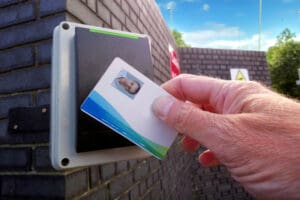When it comes to creating ID cards, there are multiple factors you’ll need to consider before you make your final choice. From what you need your ID cards to do, how you want them to look, and the material you need them to be made from, there are a lot of moving parts when it comes to making the best ID cards.
From what’s most durable to what is best for the environment, this is everything you need to know about making ID cards and the types of materials you should be using.
What kinds of materials are on the market?
There are a number of different materials on the market when it comes to ID card production. There are PVC, composites, bamboo and even paper options. But the material you use depends largely on what you’re looking to use ID cards for.
Whether you’re looking to create access cards, standard ID cards, cards for use in school or anything in between, there’s no shortage of materials you can choose from during ID card production.
What should you consider when choosing ID card materials?
When it comes to making personalised ID cards, some materials are far better than others – especially when it comes to functionality purposes. You need to consider what the card is going to be used for, if you need the card to be compatible with technology you’ve already got in place and how long you need the card to last.
Durability is a big factor in determining the best ID card materials, as you need to consider how often the cards will be used. If you need them to be used daily, choosing a more sturdy material will probably be the best decision.
The different ID card materials:
PVC
Generally speaking, PVC is the most common material that is used in the production of ID cards. PVC is durable, strong and, most importantly – can work well for a long time. PVC is also a waterproof material, so it’s ideal for access cards that may need to be used outside.
PVC cards are also a popular choice because they can be printed digitally, they can be completely personalised, and they’re cost-effective.
Composite Cards
Composite cards are made of a combination of PVC and PET. Generally, it’s 60% PVC and 40% PET in the production of ID cards. Composite cards are an excellent choice if you need something that is durable and warp-resistant; in fact, they’re more durable than their PVC counterparts.
Composite cards are also perfect for lamination, so they’re a great material to choose from for access cards, payment cards, and identification cards.
Paper Cards
This is one of the least popular and least effective materials for making ID cards. While it is substantially cheaper than PVC or composite options, it is far less durable and won’t often stand the test of daily use.
You can do some things to make paper ID cards last longer if you’re set on them. Laminating them or using a vinyl holder to protect them can help keep them in good shape for longer.
Bamboo
This is a relatively new material to hit the market that people have been using to make ID cards. It’s practical, durable and also a far more environmentally friendly option.
If you’re looking for something more sustainable than plastic ID cards but you still need something that will last, bamboo could be the perfect thing.
Find The Perfect Fit For You
Finding the best material for your ID cards does come down to personal preference. Before you begin trying to create your ID cards, remember to think about the applications you need it to perform, as well as how often they will be used. You may also want to consider environmental factors if you’re particularly interested in ensuring your ID cards are as sustainable as possible.
Consider chatting with an expert in ID card production to find out exactly what you need and what material will work best for you.
Read more:
The Best Materials To Use For ID Cards
















